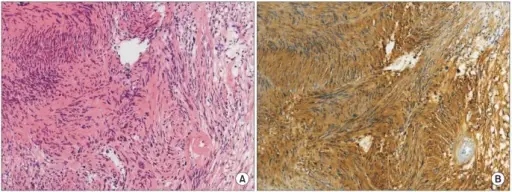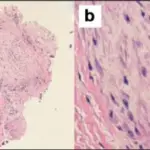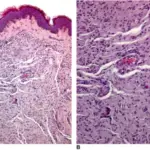Schwannoma is a benign nerve sheath tumor arising from differentiated Schwann cells.
What is the Pathology of Schwannoma?
The pathology of Schwannoma is:
-Etiology: The cause of schwannoma is not identifiable as such. It is mostly sporadic.
-Genes involved: Merlin (schwannomin, NF2).
-Pathogenesis: The sequence of events that lead to schwannoma include loss of function of merlin, either by direct genetic change involving the NF2 gene on chromosome 22 or secondarily to merlin inactivation.
-Histology: The histology associated with schwannoma shows spindle cells.
How does Schwannoma Present?
Patients with schwannoma typically affect both males and females in the age range of 20-50 years. The symptoms, features, and clinical findings associated with schwannoma include a visible lump, numbness, muscle weakness, pins, and needles feeling, night-time back or neck pain, pains that are aching, burning, or sharp pain.
How is Schwannoma Diagnosed?
Schwannoma is diagnosed using imaging studies. A biopsy may confirm the diagnosis.
How is Schwannoma Treated?
Schwannoma is treated by surgery.
What is the Prognosis of Schwannoma?
The prognosis of schwannoma is usually good as they are slow-growing tumors.



